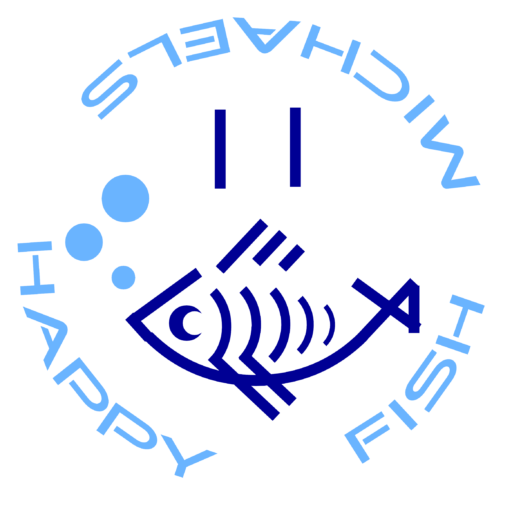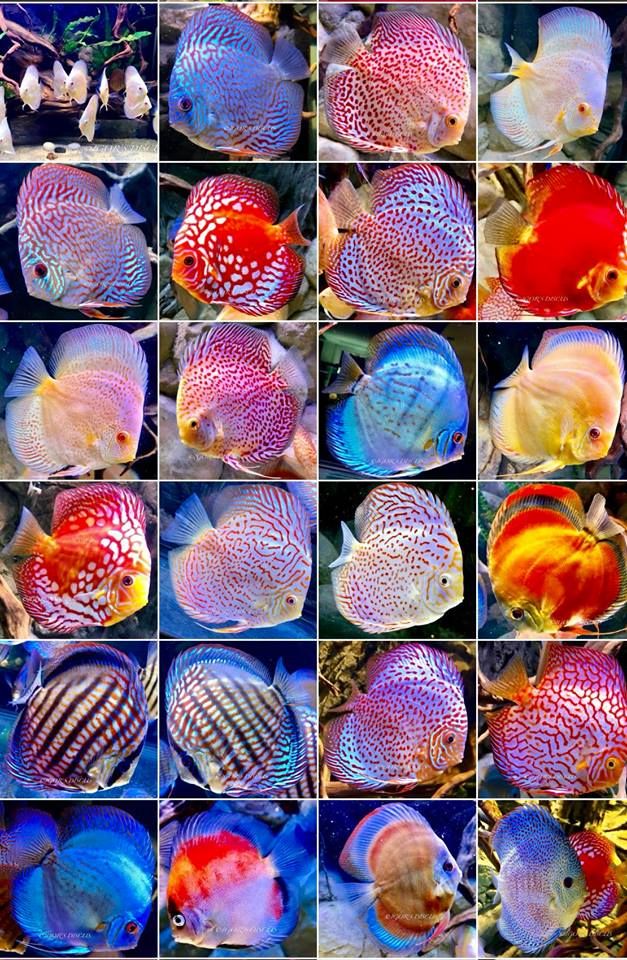- Your cart is empty
- Continue Shopping
Selecting and keeping Discus

Selecting and keeping Discus
Whether you’re a newcomer to the world of discus-keeping or a seasoned veteran, you might fancy yourself as a patron of the arts. By maintaining the right conditions for the health and well-being of these beauties, you are rewarded with moving masterpieces of color combinations and shifting patterns. Great painters who experimented with vivid colors, such as Claude Monet, Vincent van Gogh, and the Fauvists (les fauves, “the wild beasts”) took inspiration from nature — and the discus are themselves boldly colorful emissaries from the natural world. The specimens you put together create their own “schools” of art as they respond to the environment you provide them.
Discus colors and varieties
There are many different colors and varieties of Discus to choose among, and to add to the confusion, the same fish can be referred to by many different names by different sellers. Sometimes a commonly occurring variant will even be given a more “interesting” name to become more appealing to potential customers. It is also important to keep in mind that how we perceive colors are affected by lighting and surroundings. A fish that look greenish turquoise in the shop may look more bluish turquoise in your aquarium and so on.
Selecting Discus
Size
Buying really young Discus is the most inexpensive alternative, but it will on the other hand take a long time before they become old enough to breed. It can also be hard to determine color and quality at this stage. Young Discus fish are normally sold when they are roughly the size of a 50 cent coin, and at this size they all look like Brown Discus since they have not developed their adult coloration yet. For some variants, the adult coloration will not begin to show until the fish is at least a year old. When buying really young Discus, keep in mind that some of them may die before they reach adulthood and some may not grow to full Discus size. If you are planning to set up a show aquarium with close to perfect specimens you should therefore buy more Discus than what you plan to house in your future show aquarium. At this age, a Discus fish normally cost no more than 1/8 of the adult price.
At six months of age, well-kept juvenile discus fish will be half grown and have reached roughly the same diameter as a tennis ball. Most varieties will show at least hints of their adult coloration, but as mentioned above, some variants do not show their colors until they are over 12 months of age. Six month old Discus fish will be significantly more expensive than 50-cent sized Discus fish since the breeder will have housed and cared for them for six months. They will normally cost around 30-50% of the adult price.
If you plan on breeding Discus, the easiest method of obtaining a pair is to buy at least half a dozen young or juvenile fishes and let them grow up together. If you get 8-10 fishes, you will normally get at least two pairs. If you eventually find it hard to house all these big adult fishes, you can always sell the superfluous ones as soon as a pair has raised their first batch of fry and proven to be of good quality.
If your aim is a show aquarium rather than breeding, you can buy adult specimens instead of raising immature fishes. Adult Discus fish are however quite expensive, so most fish keepers prefer to purchase smaller ones even if they do not plan to breed Discus.
What to look for when selecting specimens
Start by looking at the behavior of the Discus fishes you are interested in. A healthy Discus is alert and fairly bold, and should not spend all its time hiding in a corner of the aquarium. (If the fish just arrived to the fish store they can however be dark, shy and clamp their fins until they have adjusted to their new home.) It is normal for Discus to be a bit aggressive towards each other when kept in a group, but be careful with specimens that are really violent and cause injury to other fish.
Secondly, check for any visible signs of disease or other problems, such as ragged or torn fins, abnormal skin etcetera. A Discus should not look dark or clamp its fins since this is a sign of stress. A healthy adult Discus will breathe around 60-80 times per minute, while really young specimens breathe a little faster than this. If the breathing rate is abnormal, the fish is ill or is kept in unsuitable conditions that will gradually weaken it.
Adults should show good color for their type, and juvenile specimens should at least have started to develop their adult coloration (there are however a few variants that do not color until they are at least 12 months of age). If you buy really young Discus, it will be impossible to know for sure which type of coloration they will develop and choosing a reputable breeder/seller becomes even more important. The sellers do not only have to be honest, they must also know what they are selling. Misinformed or ignorant sellers are unfortunately quite common.
You can derive a lot of information about a Discus fish by looking at its head. When you look at the fish head-on, the part of the head found above the eyes should be convex. If it is concave, the fish has not received sufficient amounts of nutrition. It can for instance have been kept on an unsuitable diet or be infested with gut parasites. Poor water quality can also cause a Discus to stop eating.
Last but certainly not least, it is important to avoid stunted specimens, at least if you want your fish to grow big as adults. Just like many other animals, humans included, Discus fish grow fastest when they are really young and their growth rate will then gradually slow down during adolescence. If the Discus fish is not provided with a suitable environment and nutritious food from the start, it will not grow enough during its childhood and it will remain stunted for the rest of its life. If you purchase stunted Discus fish, it doesn’t matter how much you feed them, they will never grow as tall as other Discus. You may be able to get them to grow a bit taller, but they will never reach the full potential of a Discus fish. Once they have stopped growing completely, the only thing you can achieve by over-feeding them is to make them obese.
So, how can you recognize a stunted Discus? A six month old Discus fish should be of roughly the same size as a tennis ball. If it is smaller, be aware. They same thing is naturally true for older Discus; a 16 month old Discus that is still tennis ball sized is not a recommended purchase and so on. Sometimes dishonest breeders will lie about the age of their fish to make them easier to sell, but fortunately there are ways of recognizing that something is wrong. Eyes that look abnormally big in relation to the size of the body is for instance a clear warning sign, and so is an unusually elongated body (a body where they length of the fish is significantly bigger than the height of the body without fins). A non-stunted Discus will have a nicely rounded body with small eyes.
Keeping Discus
Discus should only be kept by aquarists willing to devote time and energy to their aquarium. This is naturally true for all fish, but Discus fish are much more demanding than, let’s say, Danios and Rasboras. A Discus fish will not tolerate being neglected just because you have a stressful week at work or feel a bit under the weather.
The Discus has developed a reputation of being extremely sensitive, hunger strike prone and disease ridden, but the truth is that you can avoid most of these problems by keeping a well maintained aquarium. By devoting your self to preventing problems, you will spend a lot less time trying to combat illness, boats of anorexia etcetera. You should be prepared to spend at least 15-20 minutes a day on maintenance work and feedings, and about one hour a week on major maintenance such as large water changes and cleanings.
Housing Discus
How many Discus fish you can keep will greatly depended on the size of your aquarium and your skills when it comes to keeping the levels of nitrogenous waste down. If you want to set up display aquarium with adult 8-10 Discus, you will need an aquarium that measures at least 5′ x 2′ x 2′ and is equipped with powerful filtration. If you want to be on the safe side when it comes to nitrogenous waste, decrease the number of Discus down to 6-8 instead. To avoid overloading your aquarium, you can introduce a few Discus fish at a time. Quarantining each newcomer is very important, since one single diseased specimen can wipe out an entire Discus aquarium.
Discus fish are often kept in species aquariums, but they can be housed with other species if you want to. Quarantining is naturally obligatory here as well. Avoid aggressive fish, fish that will consider your Discus prey (especially important when keeping young Discus) and fish that will nip the Discus. Sucking catfish are also a very bad choice.
Water conditions
Most Discus fishes prefer a water temperature of 28-30 degrees C, but there are exceptions and researching your particular species is therefore recommended. The water should be soft and slightly acidic. The ideal pH-value for a show aquarium is 6.0-7.0, but Discus can tolerate conditions down to pH 5.5. Decreasing the pH-value from its normal level can induce breeding.
It is extremely important to keep the levels of nitrogenous waste down in a Discus aquarium. The Discus is especially sensitive to ammonia and nitrite, but the amount of nitrate must naturally also be kept in check. The levels of potentially dangerous bacteria must also be kept under control. If you have a problem keeping the water quality up despite vigorous filtration and frequent water changes, refrain from feeding food types that will rapidly disperse over the entire aquarium. It can also be a good idea to add scavengers to the aquarium that will help you remove left over food.
Feeding
Discus fish needs a varied diet to stay healthy and a monotonous diet will not only make them weaker, it can actually cause them to stop eating completely. Watch you Discus carefully during feedings to find out how much they normally eat, and do not give them more than this since overfeeding will foul the water. Knowing how much your fish normally eats will also allow you to spot problems at an early stage.
To prevent food from ending up all over the aquarium, you can use cone shaped worm feeders. Once your Discus has realized that food is to be found inside these feeders, it is actually very easy to feed them. Live food, e.g live Tubifex worms, is commended when you try to make your Discus understand how the feeders work, since live food is more enticing than dead food. Once they get the hang of it, they will happily eat frozen foods as well. cited



